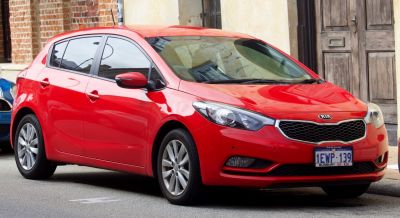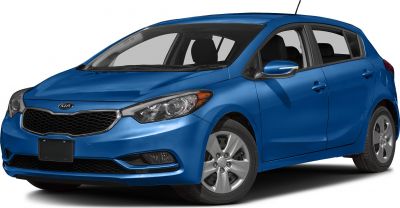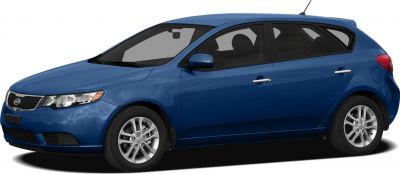 2020 Hyundai i30 III (facelift 2020) Dimensions, Size & Specs
2020 Hyundai i30 III (facelift 2020) Dimensions, Size & SpecsMeasurements of the 2020 Hyundai i30 III, engineered for optimal performance and comfort
| Dimensions | |
|---|---|
| Length: | 4340 mm170.9 in14.2 ft |
| Width: | 1795 mm70.7 in5.9 ft |
| Height: | 1419-1455 mm55.9-57.3 in4.7-4.8 ft |
| Trunk Capacity: | 381-395 liter13.5-13.9 cu ft |
| Trunk Capacity (Max): | 1287-1301 liter45.4-45.9 cu ft |
| Weight Specifications | |
| Curb Weight: | 1176-1455 kg2593-3208 lbs |
| Maximal permitted Weight: | 1750-1970 kg3858-4343 lbs |
| Roof Load: | 80 kg176 lbs |
| Tire Specifications | |
| Rims Size: | 19-inch rims:
|
| Tire Size: |
|
The Hyundai i30 III facelift, introduced in 2020 and produced until 2024, is a compact hatchback that strikes a fine balance between sporty aesthetics and practical dimensions. With an overall length of 4340 mm (170.9 inches) and a width of 1795 mm (70.7 inches), it offers a distinctly modern and agile footprint suitable for urban and suburban driving. The vehicle’s height ranges from 1419 mm to 1455 mm (55.9 to 57.3 inches), depending on suspension setup and trim, which contributes to a sleek profile and improved aerodynamics.
Curb weight varies from 1176 kg to 1455 kg (2593 to 3209 lbs), reflecting different trims, engine options, and configurations, while the maximum permissible weight spans 1750 kg to 1970 kg (3858 to 4343 lbs), ensuring solid load capacity. Inside, the Hyundai i30 III facelift offers competitive luggage space, with a standard trunk volume between 381 and 395 liters (13.4 to 13.9 cubic feet). Folding the rear seats down expands cargo capacity dramatically to 1287 - 1301 liters (45.4 to 45.9 cubic feet), supporting a versatile approach to transporting larger items or luggage for extended trips.
Adding to its practicality, the roof loading capacity stands at 80 kg (176 lbs), enabling extra cargo or roof boxes without compromising vehicle stability. The sporty appearance is enhanced by 19-inch rims sized 8.0J x 19, paired with performance tires measuring 235/35 R19 Y for a responsive ride and good road grip.
Overall, the Hyundai i30 III (facelift 2020) combines compact dimensions, smart usability, and dynamic design elements, making it a compelling choice within the compact hatchback segment for drivers seeking a blend of style, space, and efficiency.
Discover the standout features that make the 2020 Hyundai i30 III a leader in its class
Have a question? Please check our knowledgebase first.
The Hyundai i30 III (facelift 2020) hatchback measures 4340 mm (170.9 inches) in length, 1795 mm (70.7 inches) in width, and its height ranges from 1419 mm to 1455 mm (55.9 to 57.3 inches) depending on the specific model or trim. These dimensions help provide a compact yet spacious profile, suitable for urban driving and parking while maintaining a presence on the road.
The curb weight of the Hyundai i30 III (facelift 2020) varies between 1176 kg and 1455 kg (2593 to 3209 lbs), depending on the trim and engine configuration. Its maximum weight capacity, which includes passengers, cargo, and vehicle, ranges from 1750 kg to 1970 kg (3858 to 4344 lbs). This weight balance ensures good fuel efficiency alongside robust structural integrity and safety.
The Hyundai i30 III (facelift 2020) offers a luggage capacity ranging from 381 to 395 liters (13.4 to 13.9 cubic feet) with the rear seats in their upright position. When you fold down the rear seats, the luggage volume significantly increases to between 1287 and 1301 liters (45.4 to 45.9 cubic feet). This flexibility makes the i30 practical for daily commuting and weekend trips requiring more cargo space.
Yes, the Hyundai i30 III (facelift 2020) can comfortably fit into a standard garage. With a length of 4340 mm (170.9 inches), width of 1795 mm (70.7 inches), and a height ranging from 1419 to 1455 mm (55.9 to 57.3 inches), this hatchback is designed to suit typical residential garages. It offers enough clearance for doors to open easily and room to maneuver within average-sized parking spaces.
Compared to the i30 II generation, the i30 III (facelift 2020) is slightly more refined in its dimensions. While the i30 II was slightly shorter and narrower, the facelifted third-gen model features a length of 4340 mm (170.9 inches) and width of 1795 mm (70.7 inches), offering improved interior space and cargo capacity. Height has also been slightly varied for aerodynamic and styling purposes. This results in a more modern look and enhanced practicality without increasing the vehicle's overall footprint too drastically.
The Hyundai i30 III (facelift 2020) is equipped with relatively large rims sized 8.0J x 19 inches, paired with tires sized 235/35 R19 Y. These specifications contribute to improved handling, sharper cornering, and a sportier ride compared to smaller rim setups. The 19-inch wheels give the car a more aggressive stance while maintaining grip and stability at higher speeds, balancing comfort with sporty performance.
The roof load capacity for the Hyundai i30 III (facelift 2020) is rated at 80 kg (approximately 176 lbs). This allows for the safe installation of roof racks, cargo boxes, or bike carriers, enabling owners to transport additional luggage or outdoor equipment. This capacity, while modest compared to larger SUVs, is sufficient for everyday needs such as roof-mounted storage during family trips or recreational activities.
When compared to other compact hatchbacks like the Volkswagen Golf or Ford Focus, the Hyundai i30 III (facelift 2020) holds its own with competitive dimensions and weight. Its length of 4340 mm (170.9 inches) and width of 1795 mm (70.7 inches) place it in the mid-range for the class, making it neither the smallest nor the largest compact hatchback option. Its curb weight of 1176 to 1455 kg (2593 to 3209 lbs) is also typical for the segment, ensuring balanced fuel efficiency and driving dynamics. In terms of luggage space, it offers a practical load volume that rivals key competitors, making it a versatile choice for buyers focusing on size and usability.
The Hyundai i30 III (facelift 2020) shows a height variation between 1419 mm (55.9 inches) and 1455 mm (57.3 inches) depending on different trims or suspension setups. Higher trims or sportier variants may have slightly lowered or raised ride heights affecting this measurement. These height differences are minimal and usually do not affect urban parking or garage access substantially. However, they can influence aerodynamics, ground clearance, and possibly ride comfort or sporty stance on the road.
The curb weight range from 1176 kg to 1455 kg (2593 to 3209 lbs) in the Hyundai i30 III (facelift 2020) stems from different engine options, trim levels, and equipment features. Heavier models usually include more advanced technology, larger engines, additional safety features, and larger alloy wheels which contribute to increased mass. Lighter trims may have fewer amenities and smaller engines, reducing their weight. This weight variation affects fuel economy, performance, and handling, allowing buyers to choose according to their priorities.
Discover similar sized cars.

| Production: | 2015-2020 |
|---|---|
| Model Year: | 2017 |
| Length: | 4351 mm171.3 in |
| Width: | 1798 mm70.8 in |
| Height: | 1465 mm57.7 in |

| Production: | 2010-2016 |
|---|---|
| Model Year: | 2011 |
| Length: | 4351 mm171.3 in |
| Width: | 1800 mm70.9 in |
| Height: | 1430-1465 mm56.3-57.7 in |

| Production: | 2005-2006 |
|---|---|
| Model Year: | 2005 |
| Length: | 4290 mm168.9 in |
| Width: | 2033 mm80.0 in |
| Height: | 1415 mm55.7 in |

| Production: | 2016-2018 |
|---|---|
| Model Year: | 2017 |
| Length: | 4350 mm171.3 in |
| Width: | 1780 mm70.1 in |
| Height: | 1450 mm57.1 in |

| Production: | 2012-2016 |
|---|---|
| Model Year: | 2013 |
| Length: | 4350 mm171.3 in |
| Width: | 1780 mm70.1 in |
| Height: | 1450 mm57.1 in |

| Production: | 2017-2018 |
|---|---|
| Model Year: | 2017 |
| Length: | 4350 mm171.3 in |
| Width: | 1780 mm70.1 in |
| Height: | 1450 mm57.1 in |

| Production: | 2013-2016 |
|---|---|
| Model Year: | 2014 |
| Length: | 4350 mm171.3 in |
| Width: | 1780 mm70.1 in |
| Height: | 1450 mm57.1 in |

| Production: | 2010-2013 |
|---|---|
| Model Year: | 2011 |
| Length: | 4340 mm170.9 in |
| Width: | 1775 mm69.9 in |
| Height: | 1460 mm57.5 in |
